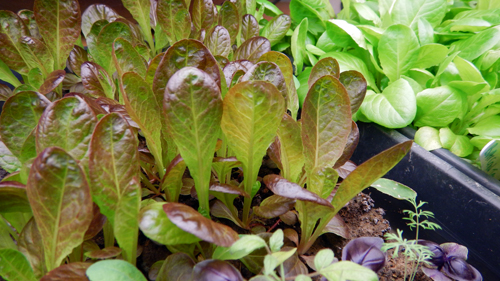Hey, Tom Bartels here with part two of the three part checklist!
(If you haven’t seen part 1 yet, you can find it here)
If you’re like me, you’re busy getting things in the ground right now. There are plenty of distractions, and sometimes it’s hard to keep everything in the right order.
Mistakes can be made during this frenzy that can affect the success of your garden for the entire season.
So I’d like to offer you a couple other tips on how to keep things in order. Keep them in mind during the busy planting session and you’ll see dramatic results later on. If you have already covered one of the steps, just move on to the next one. There’s something for everyone in these tip sheets.
Cheers
Tom [hr]
[hr]
Hardening Off:
One of the biggest mistakes I’ve seen after people take all the time to grow their own seedlings or buy several from the nursery, is to forget to harden-off the plants before putting them in the ground. Most of us have seen the results from this. The plants go into shock when the sun hits them all at once, or the temperature changes are too extreme. They wilt in place and never recover, or take a three week period to stabilize again. To prevent this, take your seedlings and put them on the back porch for a few days to help them adjust to the conditions in your area. Move them into the sun for a couple hours at first, then incrementally longer periods of time each day for a few days until you see them avoid wilting. Keep them well watered during the entire period. Leave them out at night (and away from pests) to help them adjust to night temps as well. Then you can plant them out.
Spacing your seeds or seedlings:
In the first checklist, I gave you a seed spacing chart. One of the things to keep in mind is that those individual spacing suggestions are meant for planting blocks of vegetables in a bed. Many people are mistaken in their attempts to back-off on plant spacing. The main point to remember is that when the leaf canopy of your plants reach adolescence they should all be touching canopies, with no exposed soil. Your beds should eventually be green leaves from wall to wall. I see the situation so often where well-meaning gardeners hold back, and end up with bare patches of exposed soil. This leads to dry conditions, weeds, and less food for you. So fill those gaps ahead of time by planting at correct spacing. And you can always fill gaps with fast growing greens that you can harvest as-needed to thin out later.
Herbicide Carryover:
Avoid adding compost, manure, or mulch with herbicide residue that can ruin your garden. See more info here.
Growing Tomatoes:
Yes, it’s the most popular vegetable planted in gardens nation-wide. But so many people work harder than they need to with less success. So I’m adding a “Veggie Profile” page (PDF) from inside the program to help you get an edge on growing tomatoes. It has all the tips and methods I use to get higher yields each year with less work. Get the PDF here.
